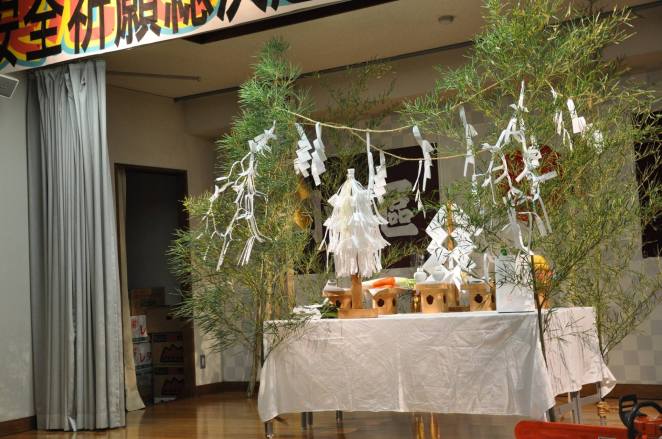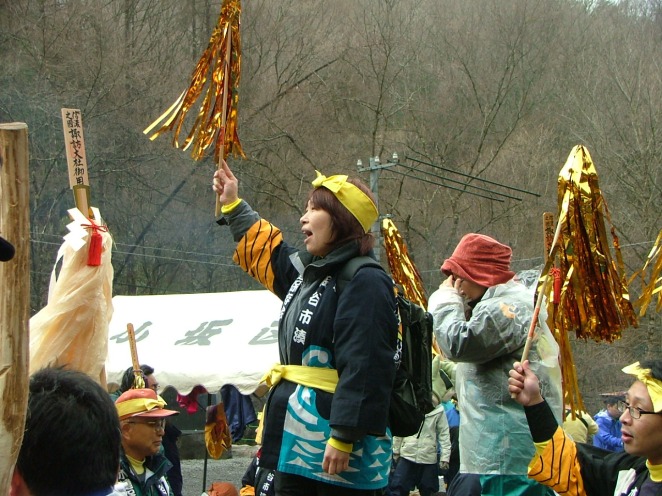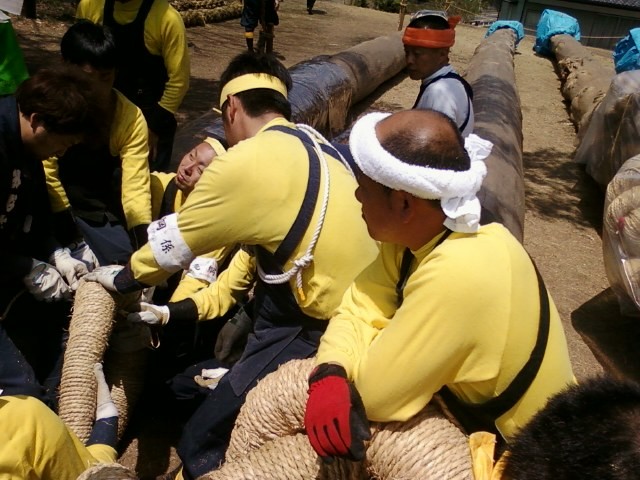The text below is from a speech by the kiyari maestro Akiko Tamura (pictured above). The videos following each section present examples of the different kinds of kiyari.
Kiyari’s role
For Kiyari we sing a special kind of song in a high tone, to set the timing for everyone to pull the Onbashira. Kiyari plays other important parts, too, like inviting the mountain gods to Onbashira and also sending them back home.
Ceremonial Kiyari
Kiyari has two kinds of songs. One is “Shinji no Kiyari”. As I just said Kiyari sings to invite the gods from the mountains.
Working Kiyari
The other kind of Kiyari song is a signal for participants to pull the pillars. Compared with “Shinji no Kiyari”, working kiyari is really high pitched and short. The song’s lyrics change depending on the situation. Sometimes we encourage people, sometimes we pray for their safety. Things like this.
Yoisa
Kiyari is for the people who participate in this festival to make their hearts as one, but only listening Kiyari isn’t very useful. After Kiyari, you see people responding with “Yoisa” three times, pushing their hands in the air. That is the most important point, saying “Yoisa” together, making all people’s hearts be one.

















